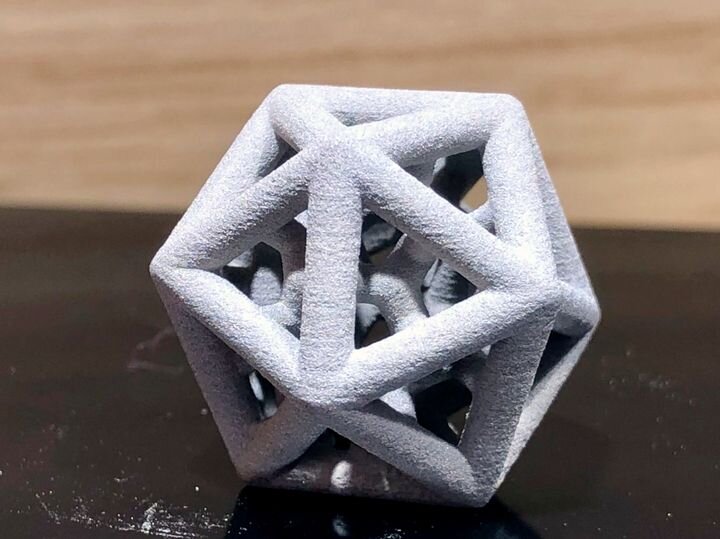![SLS 3D print made by Ricoh [Source: Fabbaloo]](https://fabbaloo.com/wp-content/uploads/2020/05/ricoh-sls-print-1_img_5eb08bbb05839.jpg)
One of the larger players in 3D printing is Ricoh, and I’m wondering what their strategy may be going forward.
The Japanese company is well-known for their photocopiers and is an enormous operation: they currently have around 100,000 employees, and an annual revenue close to US$20B. So yes, they are one of the larger players in 3D printing, although much of their operations are NOT yet in 3D printing itself.
Ricoh 3D Printing History
The company developed an SLS-style industrial 3D printer and marketed it for several years. We first saw the AM 5500SP 3D printer in 2016, and it produced high quality output, typically in nylon materials.
A subsequent meeting indicated they were in the midst of developing new machines to address the metal and ceramic markets. We even saw print samples from these efforts. However, no such machine emerged from the company.
Then in 2018 in an interview on ZDNET, the CEO of Ricoh suggested they were quite interested in the additive manufacturing market, even saying they had arranged for a large fund (US$1.8B) for “mergers and acquisitions”. However, Ricoh Americas’ then-CEO, Joji Tokunaga said:
“We have allocated $1.8 billon for M&A and it’s not specific to additive. We are also looking more broadly than additive.”
Ricoh Additive Strategy
![Another 3D print made by Ricoh [Source: Fabbaloo]](https://fabbaloo.com/wp-content/uploads/2020/05/image-asset_img_5eb08bbb526d6.jpg)
All of this sounds quite ambitious, but then during a recent discussion with their representatives, I learned that they have not been selling the SLS machine since April of 2019. They have been supporting existing users of the device, but no new sales are being made.
There was no mention of new machines, but the company appears to be developing new materials for use in 3D printers.
Instead, the company seems to be shifting to a service model, where requests for part production can receive “instant pricing”. They have been performing this type of service internally for on-demand spare parts, and intend on doing this for other companies as a service.
That’s definitely a valid additive manufacturing business model, but quite a change from their previous strategy. They seem to have not only dropped the sales of the SLS machine, but also dropped development of the metal and ceramic devices as well. Even stranger is that they have not (yet) used their fund to acquire any other parties in the space.
I’m wondering why this decision was made, as there are multiple other similar parties aggressively pursuing the industrial additive manufacturing market, most notably including HP, Sindoh and Xerox.
Paper Giants Move To 3D Printing?
Those two companies perhaps see in the very long term their paper-based operations may shrink and wish to grow an alternative business in manufacturing over the course of many years to replace them. I would imagine similar thoughts might be taking place at other paper-based corporations, such as Kyocera, Konica Minolta, Canon and others.
What will they be doing now that Ricoh seems to have toned down their 3D printing strategy?
Via Ricoh

